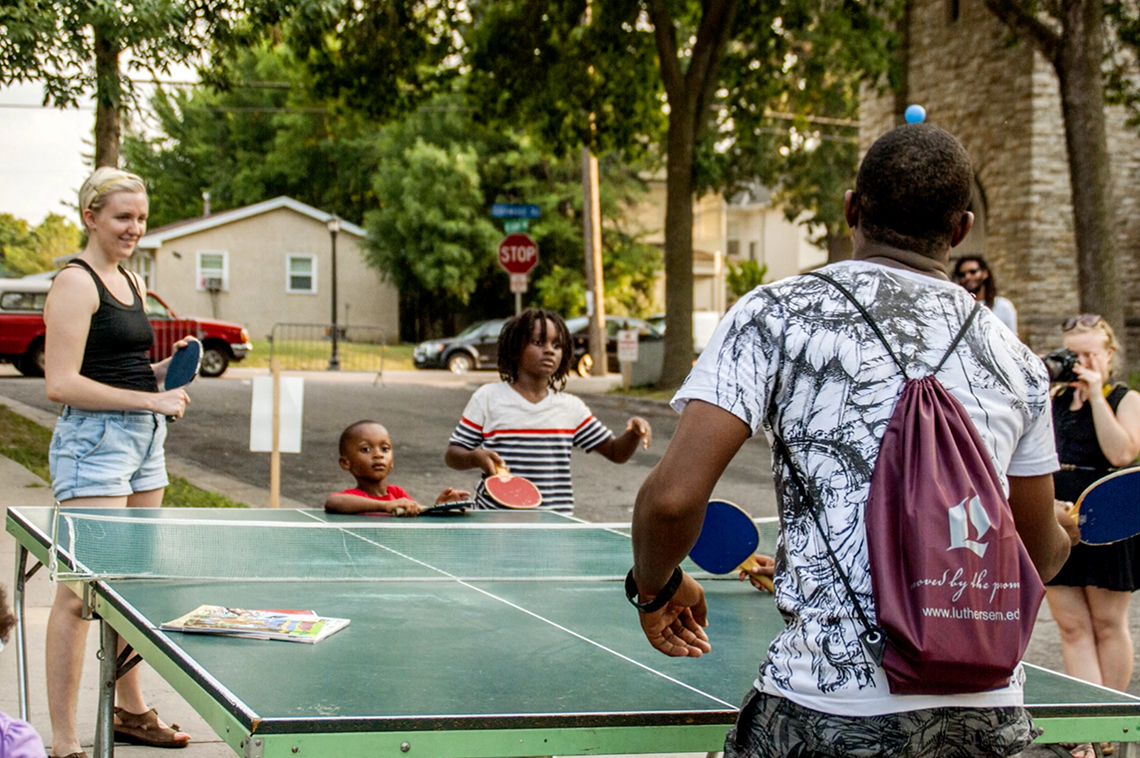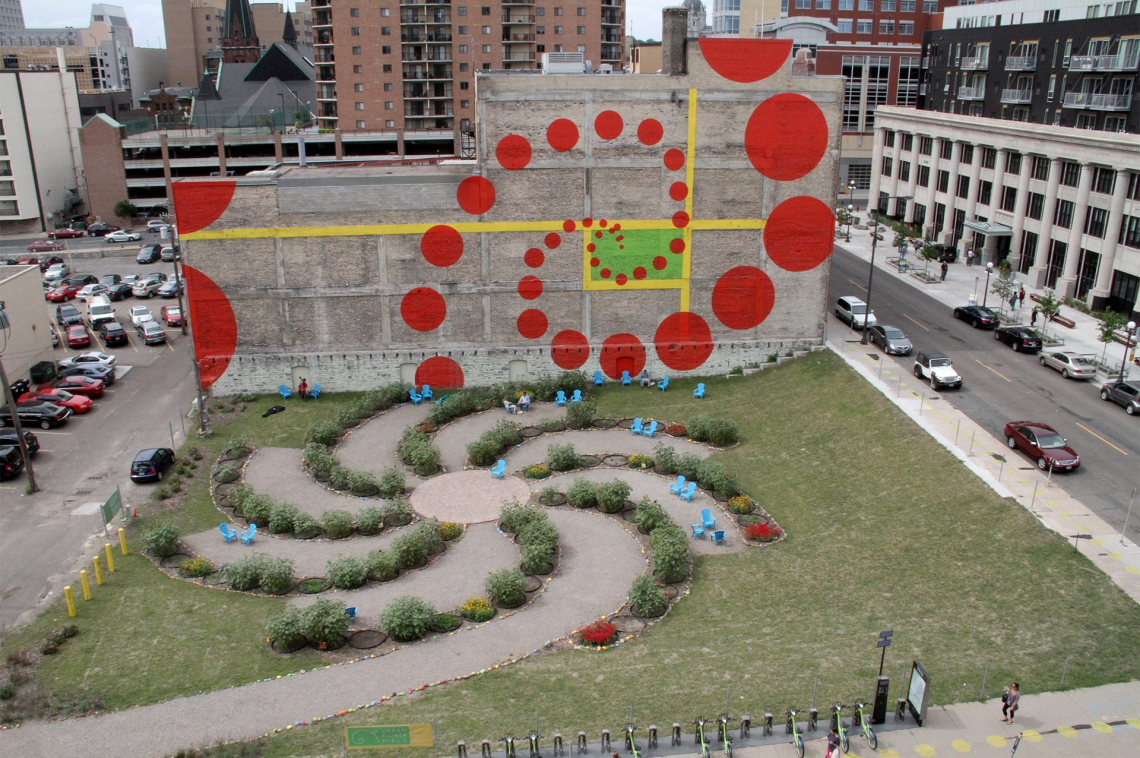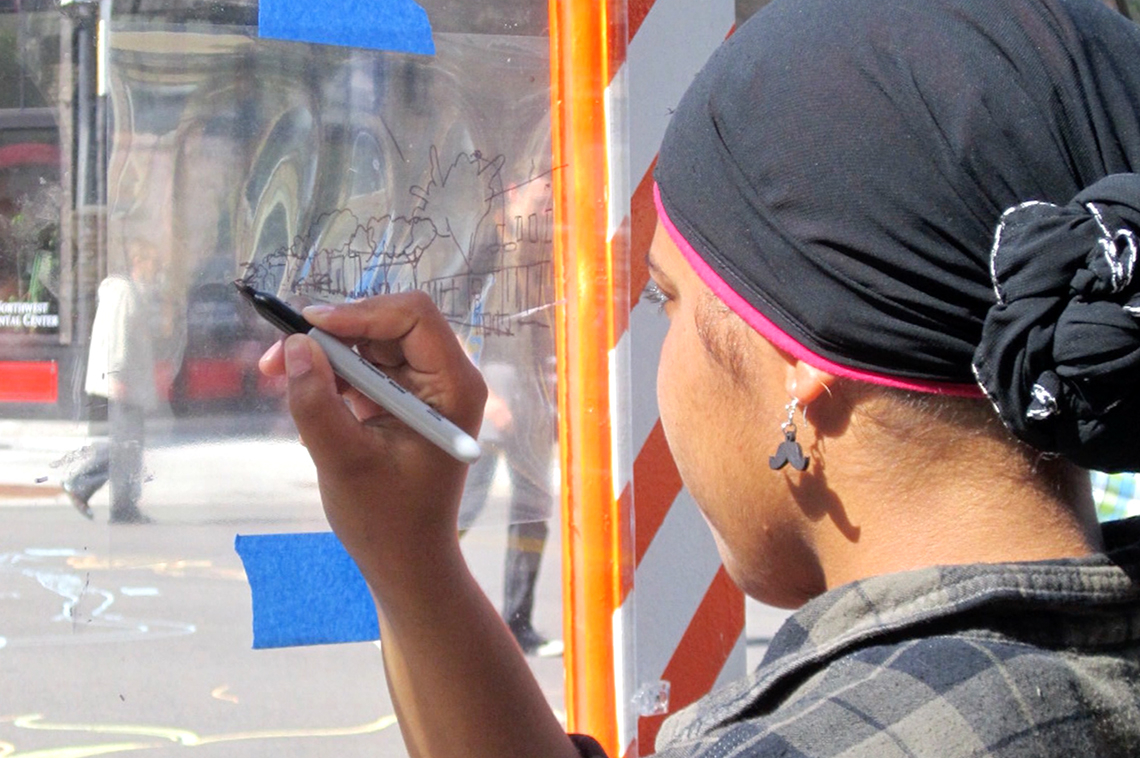


This month on the ArtPlace blog, we're exploring the environment: from the built to the unbuilt; from natural vistas to the horizons of the civic commons. We published this insightful guest post by urban planner Lynn Osgood one year ago this week, and believe it deserves a first anniversary encore.
***
The arts have always been a part of how we make our cities. In the 1890s New York City Municipal Arts Society delightfully declared, “To make us love our city, we must make our city lovely!” But even then, a debate ensued about the best approach. Would it be better to improve basic sanitation? Or would it require harnessing civic arts to foster deeper experiences of pride and attachment for citizens?
Although the terms of the debate may have changed, today we are still deeply engaged in the same question of how the arts can, and should, enable us to create vital rural and urban communities. Today, we can see a shifting awareness happening within the planning profession. As April Green wrote last month for ArtPlace, “in government settings, the word [culture] is usually thought of with a capital C: museums, theaters, concert halls,” we need to pay more attention to, “the places only locals know, like the backyard where a neighbor holds movie nights, or the community center that harbors neighborhood relics.”
Fortunately, the value of “small c” arts and culture planning is beginning to be recognized. As well, we also see a shift in thinking from the idea of approaching the arts as a “noun”, to one of partnering with the arts as a “verb”. No longer is it just about the creation of a statue, a mural, or a performing arts center (although those are still very important). Rather, what we now see is a number of cities beginning to integrate the arts into how they plan projects – from downtown streets (Plan-it Hennepin), to parks (Urban Flower Field) – as well as how they approach policies – from aquatics systems policy (My Park, My Pool, My City), to the larger systems (transportation, land use, economic development and others) that make up our city (Creative CityMaking).
The idea of artists working alongside municipal staff is beginning to gain a foothold within different city departments. Many recognize that on a fundamental level the difficulties found within our typical planning projects require us to approach them with more than just one type thinking. The difficulties experienced by planners on a day-to-day basis are many and include the facts that:
- Planning is inherently and fundamentally complex;
- Planning can by its nature be very slow;
- In planning there can often be a culture of “no”;
- There is often a divide between public perceptions of “the City” and what is actually there in terms of the sponsoring department and staff; and
- Policy discussions and planning documents aren’t always the best vehicles for resolving all the forces at play.
In the face of these challenges artists have recently brought forward a desire to answer the same questions that planners have been struggling with for many years. Questions such as, “How can we effectively engage multiple communities?”, “How do we identify ideas that truly come from residents?”, and “How can our planning processes help people to connect with each other, and not just create divisions?”
In our study of a numerous artist/planner partnerships (due out in the Summer of 2018) we identified some key ways in which artists have been helping planners and other city staff to address many of their central concerns, including:
- Creating Easy Entry Points that remove traditional barriers to civic participation;
- Making Platforms for Active Expression that honor individual perspectives and create a sense of civic agency;
- Creating Opportunities for Co-Creation where one’s input adds up to a larger whole that is meaningful, intuitive and aesthetic.
In essence, what we have found is three primary ways in which artists contribute to municipal processes:
- Artists Expand Engagement Opportunities
- Getting people to the table.
- Creating connections with and for the community.
- Artists Invite Innovation
- Helping to shift frames of understanding and change preconceptions.
- Bringing forth new ideas.
- Artists Create Project Capacity
- Creating a compelling and more easily understood focal point for an issue.
- Creating opportunities for personal connections, that are often impeded by formal civic processes, to emerge within a project.
As with any cross-sector partnership however, there are certain preconditions that also help to define successful projects:
- Time is needed to learn about the other’s profession, way of thinking, and way of doing work.
- Clarity and Flexibility are simultaneously needed to ensure a clear sense of project direction while also allowing the project to integrate the emergent findings that artists (and planners as well) bring to the table.
- The need to Build Trust within the team – which often depends heavily on the first two points. In the best of projects trust arose over time, and through the experiences of getting through small trails together. Taking on small endeavors – those low hanging fruit kinds of projects - at the beginning of a larger project cycle was often helpful.
- The necessity of Taking on Risk and supporting the efforts of all team members to potentially fail. Although planning processes are often built around tried and true ways of mitigating risks (political, financial, environmental, etc….) the best of projects allowed members to try new ideas - so new they might in fact not work at all.
Bringing together the arts and planning can indeed create moments of unexpected magic. However, it is important in this equation to recognize that while artists bring a new and expanded way of approaching urban issues, the ideas and skills of planners and municipal staff are still important to honor. It’s not a matter of replacing current thinking, but rather of adding to and expanding current ways of thinking. As ArtPlace Jamie Bennett recently asked at the Creative Placemaking Leadership Summit in Denver, Colorado, “How do we ‘titrate’ our expectations of what it is artists can bring to the equation of how we build our cities?” In other words, how can we not lay out expectations that the arts will carry a magical answer to all our questions? How in fact do we bring the skills and talents of both artists and planners to bear?
In conversations with practitioners, we found what often emerged was a hybrid way of thinking and acting. One where the artists brought in new ideas for how to open the doors into communities, and planners brought in skills for negotiating ways through complex political systems; or where artists helped bring communities to new insights and understandings, and planners were able to harness their skills in choreographing the complex decision-making processes that are needed in civic policy discussions.
Perhaps one of the greatest gifts that the arts bring to municipal planning is not a set of discrete answers, but rather a call for planners to rethink some of our fundamental questions. Indeed, one of the most exciting dimensions of creative placemaking at this moment is the fact that we don’t have all the answers we need. We do have however – through our experiments, cross-sector partnerships, and desires to find locally specific solutions – the ability to ask different kinds of questions and explore how it is that we can bring these two divergent, but ultimately synergetic, ways of thinking together.





